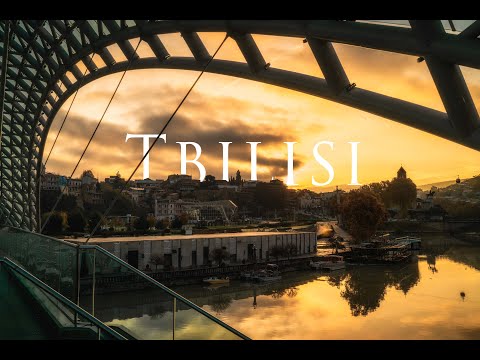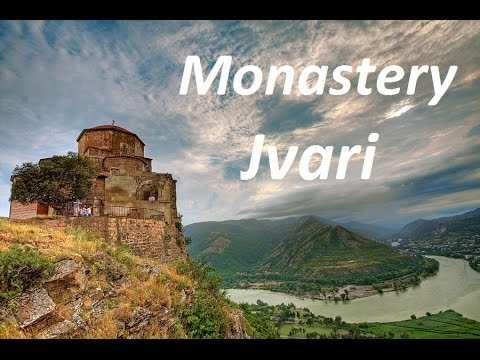Jvari Monastery UNESCO, Mtskheta, Georgia - Davit Nozadze, Georgia Guide \u0026 Tour Manager
Jvari Monastery UNESCO, Mtskheta, Georgia - Davit Nozadze, Georgia Guide \u0026 Tour Manager
More on the Jvari Monastery, from https://en.wikipedia.org/wiki/Jvari_M...
Jvari Monastery (Georgian: ჯვრის მონასტერი) is a sixth-century Georgian Orthodox monastery near Mtskheta, eastern Georgia. Along with other historic structures of Mtskheta, it is listed as a World Heritage site by UNESCO. Jvari is a rare case of the Early Medieval Georgian church that survived to the present day almost unchanged. The church became the founder of its type, the Jvari type of church architecture, prevalent in Georgia and Armenia. Built atop of Jvari Mount (656 m a.s.l.), the monastery is an example of harmonious connection with the natural environment, characteristic to Georgian architecture.
Jvari Monastery stands on the rocky mountaintop at the confluence of the Mtkvari and Aragvi rivers, overlooking the town of Mtskheta, which was formerly the capital of the Kingdom of Iberia.
According to traditional accounts, on this location in the early 4th century Saint Nino, a female evangelist credited with converting King Mirian III of Iberia to Christianity, erected a large wooden (or vine) cross on the site of a pagan temple. The cross was reportedly able to work miracles and therefore drew pilgrims from all over the Caucasus. A small church was erected over the remnants of the wooden cross in c.545 during the rule of Guaram I, and named the "Small Church of Jvari", which can still be seen adjacent to the main church from the north.
The small church did not satisfy the needs of popular pilgrimage site, and the present building, or "Great Church of Jvari", is generally held to have been built between 590 and 605 by Guaram's son Erismtavari Stepanoz I. This is based on the Jvari inscriptions on its facade which mentions the principal builders of the church: Stephanos the patricius, Demetrius the hypatos, and Adarnase the hypatos. Professor Cyril Toumanoff disagrees with this view, identifying these individuals as Stepanoz II, Demetre (brother of Stepanoz I), and Adarnase II (son of Stepanoz II), respectively.[1] Nino's cross remained inside of the church, and its original postament can still be found here.
In 914, during the Sajid invasion of Georgia, the church was burned by Arabs, but it managed to survive with only minor repairments.
The importance of Jvari complex increased over time and attracted many pilgrims. In the late Middle Ages, the complex was fortified by a stone wall and gate, remnants of which still survive. During the Soviet period, the church was preserved as a national monument, but access was rendered difficult by tight security at a nearby military base. After the independence of Georgia, the building was restored to active religious use. Jvari was listed together with other monuments of Mtskheta in 1994 as a UNESCO World Heritage Site.
However, over the centuries the structures suffered damage from rain and wind erosion and inadequate maintenance. Jvari was listed in the 2004 World Monuments Watch list by the World Monuments Fund.
About Davit Nozadze, from https://www.mircorp.com/guide/davit-n...
Davit (David) Nozadze was born in Tbilisi, Georgia, and raised in Borjomi. He’s been working as a guide and tour manager since 2009, specializing in off-road trips, large and small cultural tours, wine, and gastronomy. Having earned a degree in law, as well as human geography, Davit is fluent in English and Georgian. He says that “meeting people – and through them experiencing local culture – drives my travel engine.”
Video Transcript:
- We are at Jvari Monastery located nearby the town of Mtskheta, it was built in the sixth century and it was carried out as one of the first Christian churches created in Georgia and still stays as an active church today. It attracts lots of visitors for religious purposes but beside that it has also historical significance, so it, stone cross on it and then the church was built around it. So once you go inside you'll still see the remnants of this stage structure for the Christian temple to have shrine in the middle. It's not really typical for the Orthodox Church but this one in particular has and plus the other amazing use of the River of Kura, which is larger river coming from the mountains of the Lesser Caucasus from Turkey and eventually flowing down to the Caspian and then on the other side of the Kura, merging with it we have the River Aragvi coming down from the Greater Caucasus and bringing all the glacier water. You can see the difference in the color of it.

მსგავსი ვიდეოები

ჯვრის მონასტერი / Jvari Monastery
Lasha Mtvaradze

Cross - Крест - ჯვარი 4K
DG GROUP

Historical City of Mtskheta (მცხეთა), Georgia
FlightTravels

Hidden History | Mtskheta | სვეტიცხოვლის საკათედრო ტაძარი |...
Friday Coffee

Tbilisi Georgia City tour TOP 10 sights თბილისი საქართველო
Surf and Turf Travel
![Jvari Monastery / Dschwari Kloster / ჯვრის მონასტერი [4K]](https://i.ytimg.com/vi/NRFGgL8he2E/hqdefault.jpg?sqp=-oaymwEbCKgBEF5IVfKriqkDDggBFQAAiEIYAXABwAEG\u0026rs=AOn4CLBWW3RPbR832tlXX1GQXAZIivCXBg)
Jvari Monastery / Dschwari Kloster / ჯვრის მონასტერი [4K]
Enjoy Georgia

Jvari Monastery, Georgia -Το Μοναστήρι του Σταυρού - ჯვრის მ...
Takis Travels

Jvari Monastery. Мцхета. Монастырь Джвари. ჯვრის მონასტერი
anfilatov